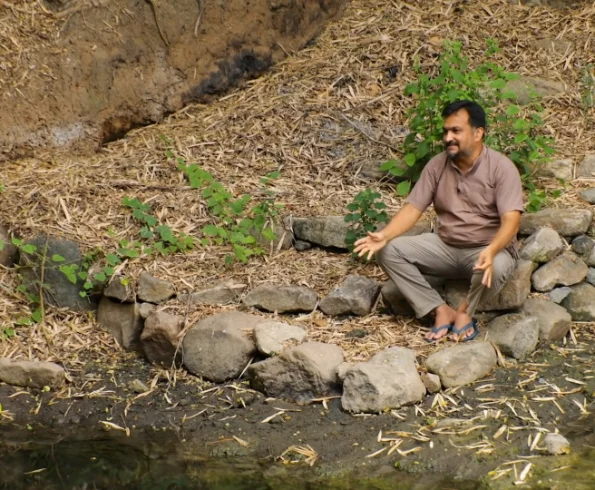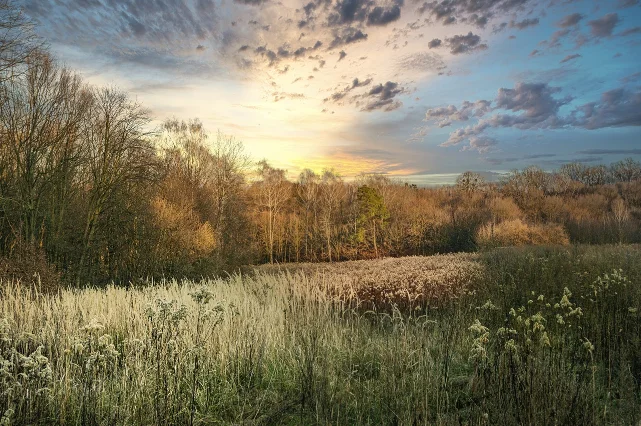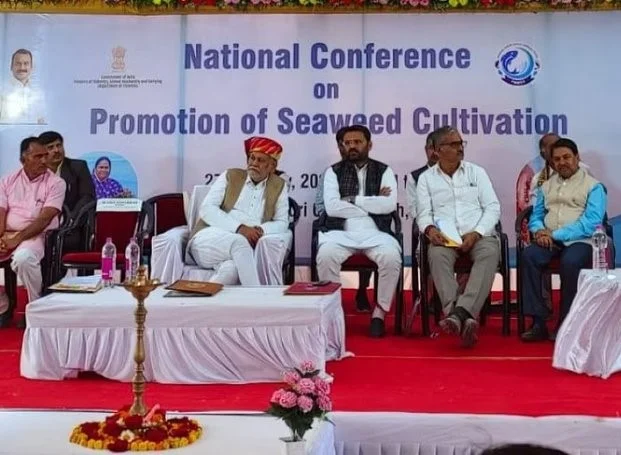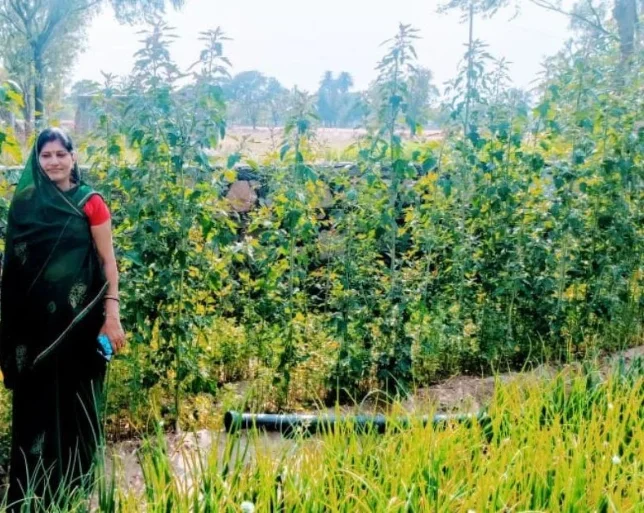The situation of land degradation in India is alarming, with an estimated 96.4 million hectares, almost 30 percent of the country’s total geographical area, experiencing either desertification or degradation. This widespread issue is not unique to India, as globally, the combination of land degradation, climate change, and biodiversity loss is projected to compel around 700 million people to migrate by 2050.
Amidst this global challenge, a remarkable story of transformation unfolds in the remote hillock of the Dharmapuri district in Tamil Nadu, South India. Over the past decade, green activist Piyush Manosh, along with his friends, has achieved the seemingly impossible. They turned a rocky and barren piece of land, one that the local community, including farmers, had given up on, into a thriving 250-acre cooperative forest.

Piyush Manosh elaborates on the significance of their location, stating, “Our cooperative is situated in the water catchment area of the River Kaveri. Initially, this entire region consisted of undulating rocky terrain, characterized by dry and arid conditions, forming a significant portion of the water catchment area. Through our efforts, we’ve managed to transform what was once dry and arid into a thriving ecosystem.”
The concept of a cooperative forest follows the model of social forestry, where a collective effort is made to establish a profitable woodland with shared resources and sustainable businesses. Piyush Manosh explains the essence of their cooperative, stating, “A cooperative forest is created when a group of people comes together to develop a for-profit jungle, building sustainable enterprises around it.”
Also Read: This ‘Family Farmer’ helps you eat right with organic farming and traditional wisdom
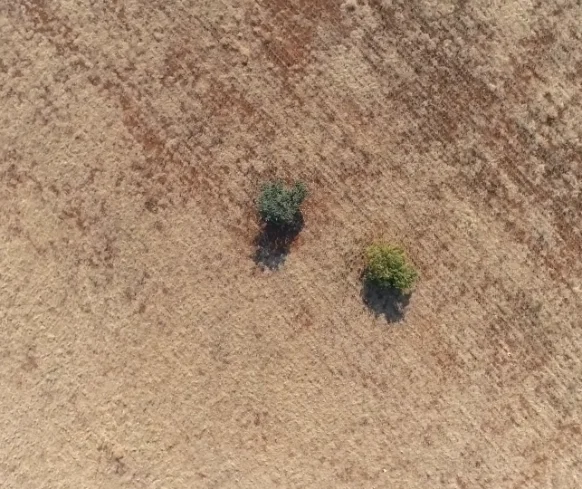
Reflecting on the inception of the project, Piyush shares his initial vision, saying, “When I first arrived here, I purchased 100 acres with a dream of having a piece of land with a flowing stream, surrounded by a lush forest, a quaint bamboo house, and hopefully, a forest that could generate profit. This idea fascinated my friends, especially because I was already engaged in green entrepreneurship, involved in activities such as making areca sheath plates, working on vermicompost, and experimenting with tree planting. The appeal of the project was immediate, and my friends said, ‘Let’s chip in.'”
Over the years, Piyush Manosh embarked on a roller coaster journey, joined by approximately 70 investors, all committed to coaxing nature back to its benevolent state.
Piyush clarifies the cooperative’s ethos, stating, “Presently, no returns are guaranteed to people. We only want individuals to come in, pitch in here, start their businesses, and begin their lives in this space.”
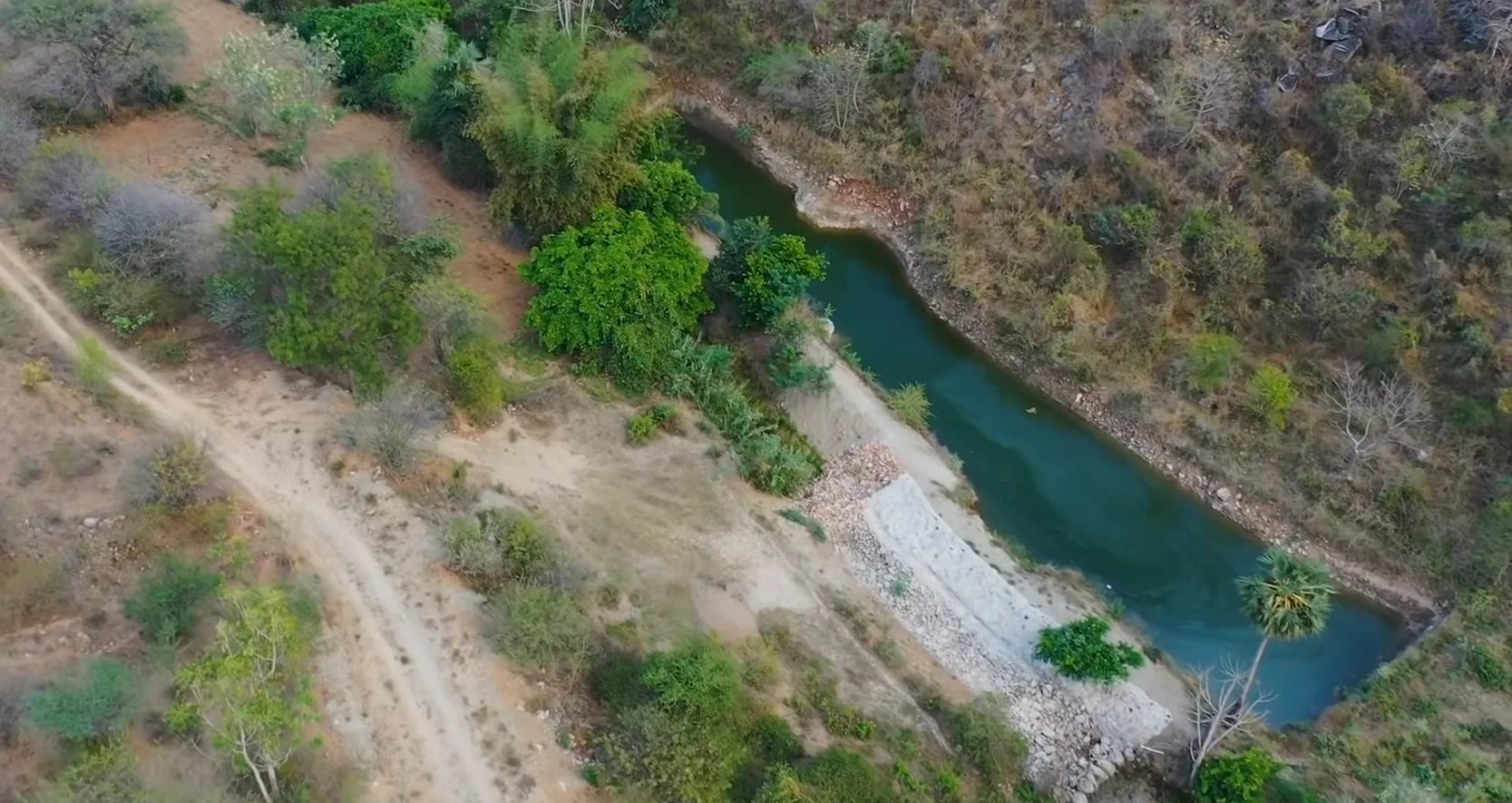
For each of the 70 participants, the cooperative has been both an environmental experiment and a voyage of self-discovery.
Former IT engineer Vignesh, along with his wife Lavanya, found solace in the forest, an escape from the corporate circus. Settling into a modest dwelling within the jungle, Vignesh has spent the past two years experimenting with poultry and organic food products, illustrating the diverse ways in which individuals have embraced the cooperative as a platform for personal and environmental exploration.
Also Read: A Woman Converts 90 Acres Wasteland into a Thriving Green Forest in Odisha
Vignesh shares his motivation for joining the initiative, saying, “The rainwater harvesting work and the idea of communal farming attracted me and led me to this place. While it’s easier to farm in areas with abundant water, not everyone has that luxury. Many places suffer from unpredictable and intense rainfall. This initiative is significant; it instills hope.”
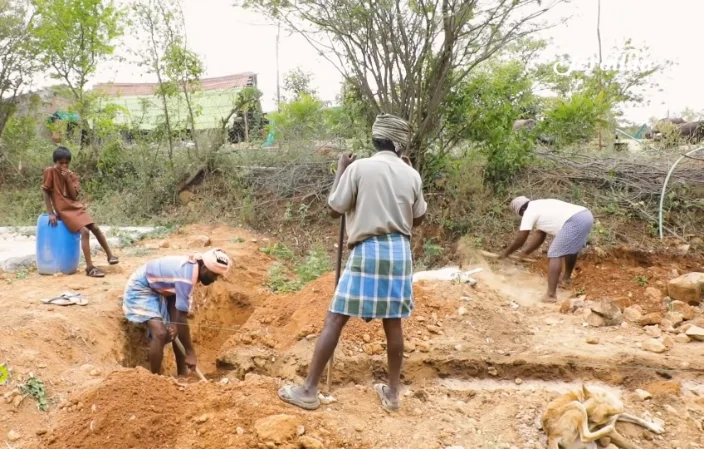
The Dharmapuri district of Tamil Nadu, where this cooperative forest thrives, is a semi-arid region where 70 percent of the population depends on dryland agriculture. Despite experiencing two monsoons annually, the irregular and intense rainfall often hinders the recharge of groundwater. Much of the rainwater goes to waste as runoff. Initiatives like the cooperative forest, which focuses not only on biodiversity revival but also on groundwater recharge, can make a substantial difference.
Piyush emphasizes the environmental challenges in the region, stating, “This entire area is dominated by invasive species like acacia florences and a local species called arapa. The loss of biodiversity has severely impacted groundwater levels. Without trees and humus, the ground has become hardened, forming rigid hillocks. Our goal now is to restore the soil’s sponginess, bringing it back to a state where it can absorb water and moisture from the air, sending it into the ground. As a first step, we’ve initiated rainwater harvesting structures.”
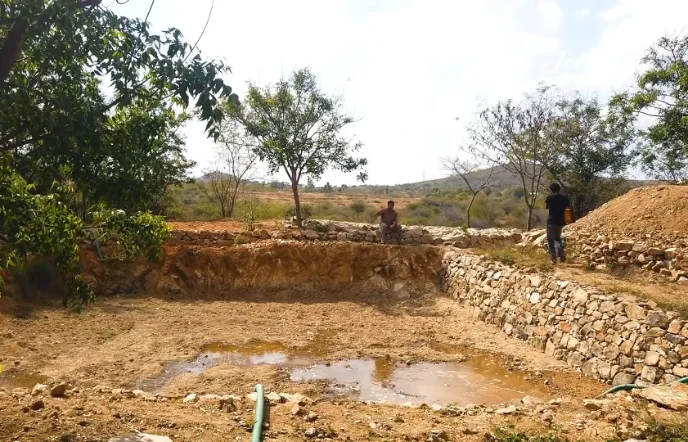
In 2012, Tamil Nadu experienced what is considered the most severe drought in 140 years. In the subsequent years, the state faced a series of extreme climate events, ranging from devastating floods to cyclones and persistent droughts. Throughout these challenges, the cooperative forest persevered.
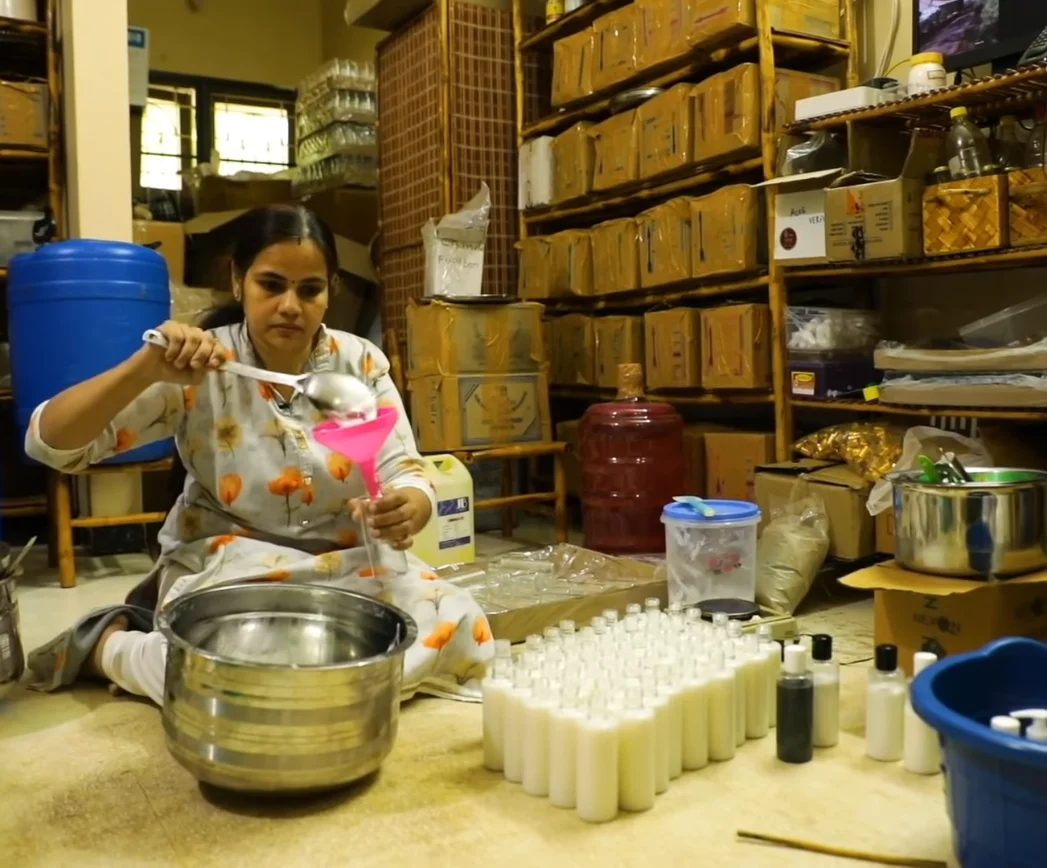
Piyush Manosh reflects on the initial expectations, stating, “Initially, there was the idea of sharing profits. However, after the harsh reality of continuous droughts post-2012, it became clear to everyone that this was not an easy or straightforward venture. So, after 10 years of waiting, we now have electricity. What we’ve done is construct ponds atop hillocks. These small structures, when there’s a monsoon with a good water flow, allow us to pump water from downstream to upstream. As we fill these ponds, the hillocks transform into absorbent landscapes, acting like small sponges.”
While the co-op’s environmental impact is evident in the abundance of water bodies and lush greenery, it has also made significant strides in becoming a commercially viable model. Currently, it boasts a fully operational bamboo furniture unit overseen by Piyush, a herbal cosmetic unit managed by his wife Monica, and a group of young entrepreneurs exploring eco-friendly ventures such as plant-based food units, free-range poultry, and composting.

The cooperative already achieves an annual turnover of one and a half crores, primarily from the sale of its primary produce, including bamboo, aloe vera, medicinal plants, and vegetables. With the recent addition of electricity, projections indicate further growth in these numbers.
Monica, leading the herbal cosmetic unit, has developed over 150 products utilizing co-op resources such as neem, aloe vera, and goat milk, establishing herself as an equal leader within the cooperative.
Explaining the rationale behind their value addition efforts, Monica states, “We often faced challenges getting good pricing for the raw materials in the market, and sometimes, we couldn’t sell them before they spoiled. Through value addition for the co-op forest products, we discovered that it not only enhances their shelf life but also creates better market opportunities.”

The current objective is to encourage partners to be more than just investors in the cooperative. Piyush envisions the co-op as a green incubation center, providing individuals with the opportunity to explore eco-conscious businesses. The ultimate dream is to extend this model back to the very community that once abandoned the soil—the farmers.
Piyush expresses this vision, stating, “Over the years, we’ve succeeded in conserving water, but the challenge now is distributing it. With the arrival of electricity, we are now in a position to distribute water. As soon as this happens, we’re ready to welcome farmers from all regions to share our experiences. What experiences? The experience of developing the most effective water management plan, one they can adopt to secure water security in their respective areas.”
In the Dharmapuri region, farmers not only grapple with drought but also face the challenge of an unpredictable northeast monsoon. The intense showers that characterize this monsoon provide a narrow window for seed sowing. Climate change and erratic weather patterns have forced many farmers to migrate to other regions. For those downstream, however, this man-made forest represents a ray of hope. With wells brimming with water even in peak summer, they finally have a compelling reason to stay home. The cooperative forest emerges as a lifeline for farmers, offering a sustainable solution to their water-related challenges and potentially stemming the tide of migration.
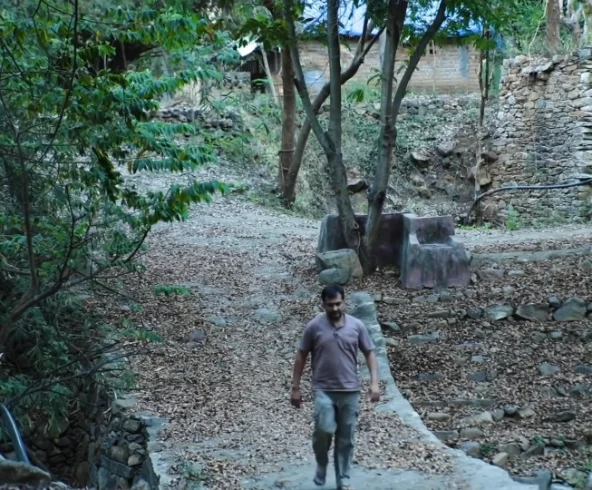
Local farmer Eashwari shares her experience, stating, “Before the ponds were made, the water would simply run off. We could only harvest one crop cycle, and we had to wait for rain to attempt a second cycle. However, with the ponds and the stored water, we’ve been able to achieve 2-3 crop cycles.”
The cooperative forest appears to be inclusive, providing a space for everyone—from farmers and engineers to birds and buffalos. It stands as a testament to the notion that, with a gentle push, nature can and indeed does find a way to thrive and rejuvenate. The co-op’s impact extends beyond human endeavors, creating a harmonious environment where various elements of nature coexist and flourish.

